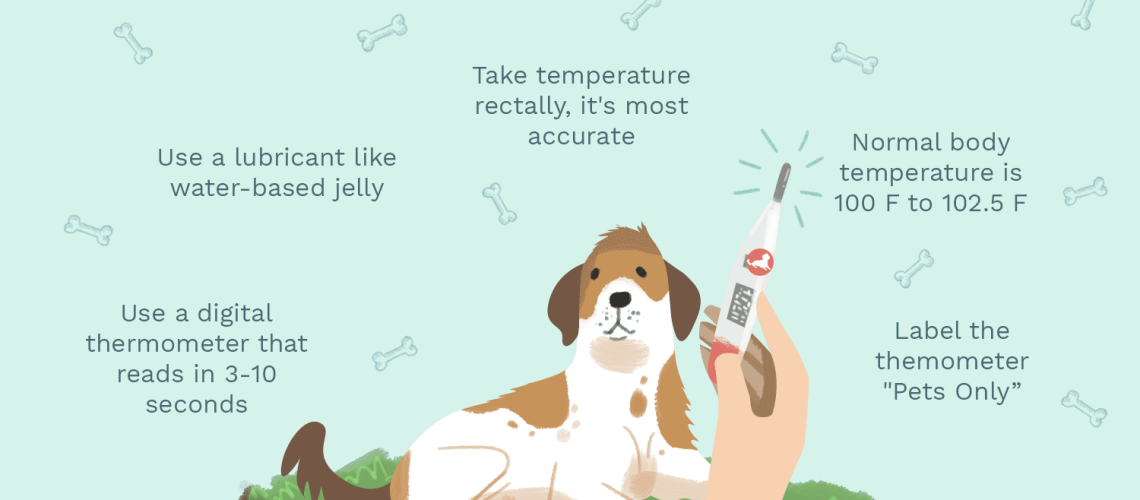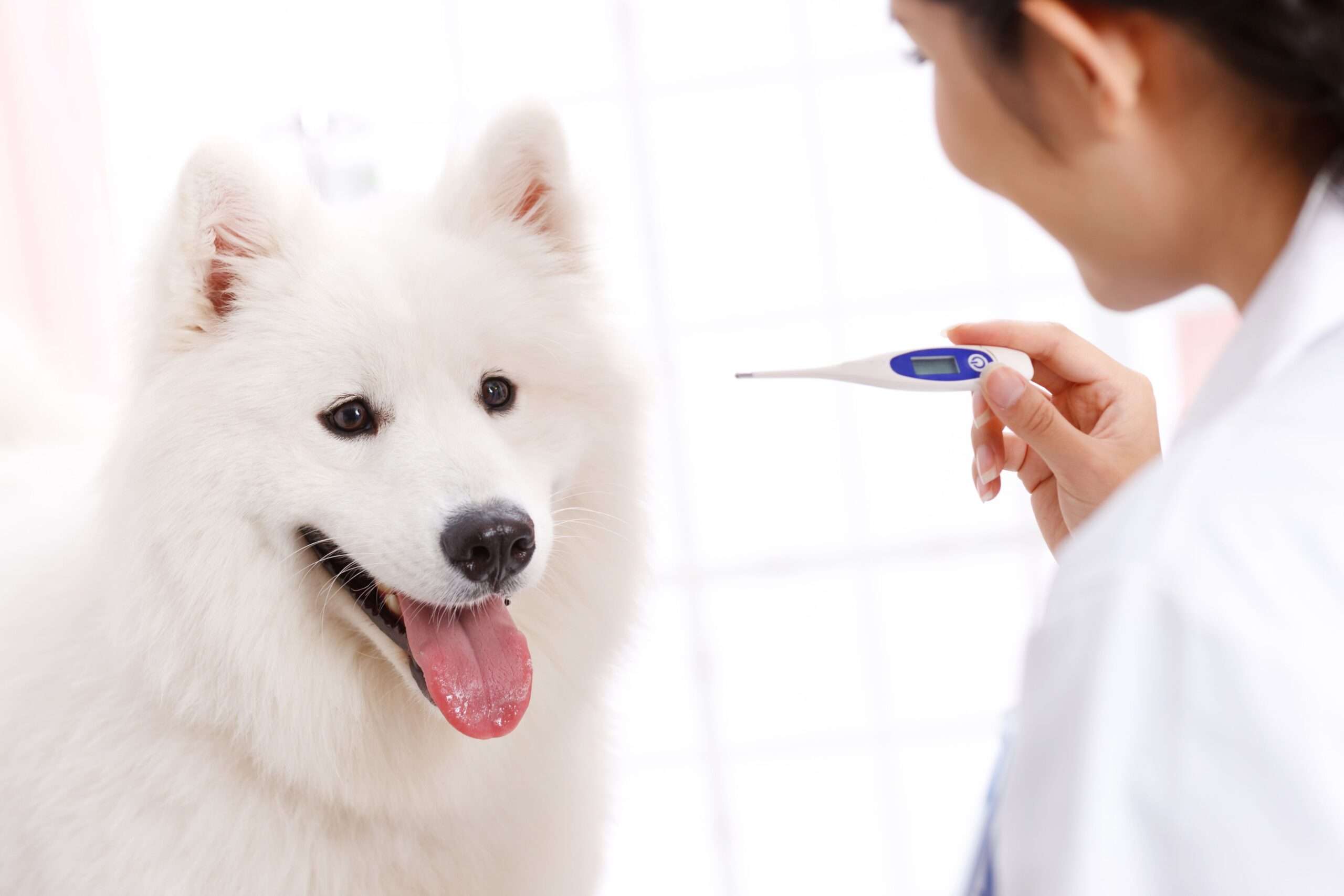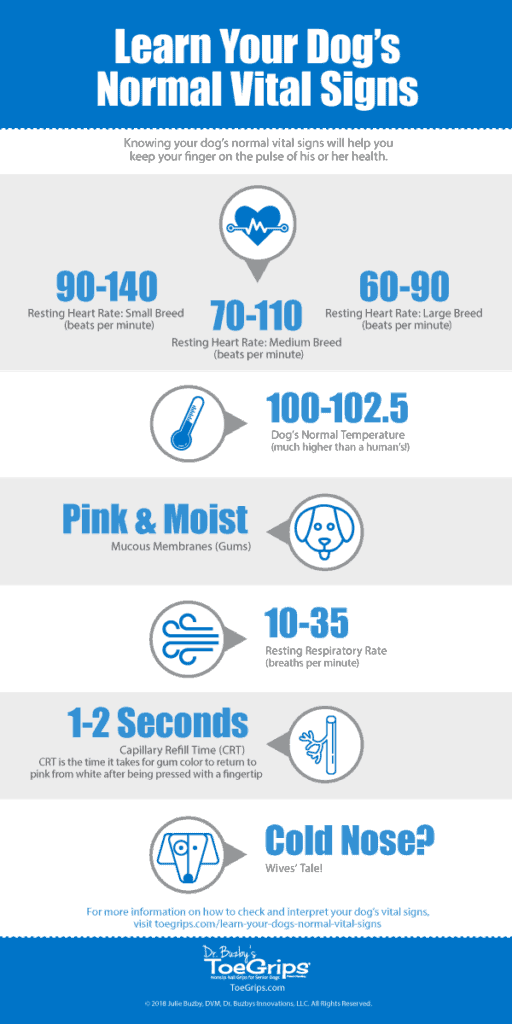If you're wondering how to take your puppy's temperature, we've got you covered. This guide will provide you with simple and effective methods to ensure the well-being of your furry friend.
Key Takeaways:
- Use a digital rectal thermometer to take your puppy's temperature.
- Apply lubrication to the thermometer before gently inserting it into your puppy's rectum.
- Hold the thermometer in place for about one minute to get an accurate reading.
- A normal body temperature for a puppy is between 99.5°F and 102.5°F.
- If your puppy's temperature is too high or too low, consult a veterinarian immediately.
Why is it important to take your puppy's temperature?
Taking your puppy's temperature is an important part of monitoring its health. Just like humans, dogs can get sick and develop fevers. By regularly checking your puppy's temperature, you can catch any signs of illness early on and seek veterinary care if needed. A change in body temperature can indicate an underlying health issue, such as an infection or inflammation, so it's crucial to keep track of your puppy's temperature.
Early detection of illness
By taking your puppy's temperature regularly, you can detect any signs of illness early on. This allows you to take prompt action and seek veterinary care if necessary. Some common signs of illness in puppies include lethargy, loss of appetite, vomiting, diarrhea, coughing, and sneezing. However, these symptoms may not always be apparent until the illness has progressed. By monitoring your puppy's temperature, you can catch any changes that might indicate an underlying health problem before other symptoms appear.
Monitoring recovery from illness
If your puppy has been ill and is undergoing treatment or recovering from a sickness or surgery, taking its temperature can help monitor its progress. A stable body temperature within the normal range indicates that the treatment is working effectively and the puppy is on the road to recovery. On the other hand, a persistent fever or abnormal fluctuations in body temperature may suggest that further medical intervention is required.
Taking your puppy's temperature may seem daunting at first but with practice and proper technique, it becomes easier over time. It is a valuable skill for any dog owner to have in order to ensure their furry friend stays healthy and receives timely medical attention when needed.
Tools needed to take your puppy's temperature
To accurately measure your puppy's temperature, you will need a few essential tools. Firstly, you will need a digital rectal thermometer specifically designed for pets. These thermometers are safer and more accurate than regular human thermometers. Additionally, it is recommended to have some lubricant such as petroleum jelly or water-based lubricant to make the process more comfortable for your puppy. Lastly, having some disposable gloves on hand is important to maintain hygiene and prevent the spread of any potential infections.
Recommended tools:
- Digital rectal thermometer for pets
- Lubricant (petroleum jelly or water-based)
- Disposable gloves
Preparing your puppy before taking its temperature
Before attempting to take your puppy's temperature, it is crucial to create a calm and comfortable environment for them. Start by finding a quiet area where you can minimize distractions and ensure that both you and your puppy are relaxed. It may be helpful to have another person present who can gently hold and comfort the puppy during the process.
Tips for preparing your puppy:
- Create a calm environment with minimal distractions
- Ensure both you and your puppy are relaxed
- Have another person present if possible to provide comfort
Using a regular thermometer to measure a puppy's temperature
While using a regular thermometer may not be as accurate as a pet-specific one, it can still provide an approximate reading in case you do not have access to one designed for animals. To use a regular thermometer, apply some lubricant on the tip and gently insert it into your puppy's rectum about an inch or two. Hold it in place for a minute or until the thermometer beeps, indicating that it has finished measuring the temperature. Remember to clean the thermometer thoroughly before and after use to prevent any potential infections.
Steps to measure temperature with a regular thermometer:
- Apply lubricant on the tip of the thermometer
- Gently insert the thermometer into your puppy's rectum about an inch or two
- Hold it in place for a minute or until it beeps
- Clean the thermometer before and after use
Ideal range for a puppy's body temperature and what it indicates if outside this range
The ideal body temperature for a healthy puppy typically falls between 100.5°F and 102.5°F (38°C - 39.2°C). If your puppy's temperature is below this range, it may indicate hypothermia, which can be caused by exposure to cold temperatures or underlying health issues. On the other hand, if your puppy's temperature exceeds 103°F (39.4°C), it may suggest fever, infection, or inflammation.
Puppy's body temperature:
- Ideal range: 100.5°F - 102.5°F (38°C - 39.2°C)
Possible indications if outside ideal range:
- Below ideal range: Hypothermia, exposure to cold temperatures, underlying health issues
- Above ideal range: Fever, infection, inflammation
Positioning your puppy when taking its temperature rectally
Proper positioning is crucial when taking your puppy's temperature rectally to ensure accuracy and minimize discomfort. Gently lift your puppy's tail and support its hindquarters with one hand. With the other hand, carefully insert the thermometer into the rectum, angling it slightly towards the belly. Be cautious not to push too forcefully or cause any harm to your puppy. It is essential to remain calm and gentle throughout the process to keep your puppy at ease.
Steps for positioning your puppy:
- Gently lift your puppy's tail
- Support its hindquarters with one hand
- Carefully insert the thermometer into the rectum, angling it slightly towards the belly
- Remain calm and gentle throughout
Signs indicating that your puppy has a fever and needs its temperature taken
Recognizing signs of a fever in your puppy is crucial in determining if their temperature needs to be taken. Some common signs include lethargy, loss of appetite, shivering or trembling, warm ears or paws, coughing or sneezing, vomiting or diarrhea, and increased thirst. If you notice these symptoms in your puppy, it is advisable to take their temperature promptly to assess their condition accurately.
Signs of a fever in puppies:
- Lethargy
- Loss of appetite
- Shivering or trembling
- Warm ears or paws
- Coughing or sneezing
- Vomiting or diarrhea
- Increased thirst
Risks and precautions when taking a puppy's temperature at home
While taking a puppy's temperature at home can be done safely, it is essential to be aware of potential risks and take necessary precautions. One risk is accidentally causing injury or discomfort to the puppy if the thermometer is inserted too forcefully or at the wrong angle. Another risk is the potential spread of infections if proper hygiene practices are not followed. To minimize these risks, always use a pet-specific thermometer, apply lubricant, handle your puppy gently, and clean the thermometer before and after each use.
Risks and precautions:
- Avoid inserting the thermometer too forcefully or at the wrong angle
- Follow proper hygiene practices to prevent infection
- Use a pet-specific thermometer
- Apply lubricant for comfort
- Handle your puppy gently throughout the process
- Clean the thermometer before and after each use
| Conclusion: Taking Your Puppy's Temperature | |
| 1. Prepare the necessary equipment, including a digital thermometer and lubricant. | 2. Ensure your puppy is calm and relaxed before attempting to take their temperature. |
| 3. Gently insert the thermometer into your puppy's rectum, following the instructions provided. | 4. Wait for the thermometer to beep or indicate that it has finished measuring the temperature. |
Can you use a human thermometer on a puppy?You can use any type of thermometer, whether it is made for dogs or for humans. It is recommended to use a digital thermometer as it provides faster readings. Can you take a dog's temperature with an ear thermometer?Measuring your dog's temperature using an ear thermometer involves detecting infrared heat waves emitted from the eardrum region. It is important to carefully insert the thermometer into the horizontal ear canal to ensure an accurate reading. A typical dog's ear temperature ranges from 100° to 103°F. Can I take my dogs temperature with a touchless thermometer?A perfect thermometer is fast, comfortable for the patient, and precise. Although non-contact thermometers can provide a temperature reading within seconds, they are not always tolerated by dogs and are not accurate enough for clinical use in dogs or cats. What is a parvo puppy temperature?Dogs who have the intestinal form of parvovirus can deteriorate rapidly within a span of 24 to 72 hours. They commonly experience foul-smelling diarrhea, which can occur at any age and may appear watery, yellow, or bloody. A fever with a temperature above 39.5°C/103.1°F is also a notable symptom. Can you take a dog's temperature under the arm?If you can't take your dog's temperature using any other method, you can use a regular digital thermometer to take a reading from their armpit (or leg-pit). However, these readings may not be consistent and are therefore less reliable. How warm should a 3 week old puppy be?In the first few days after birth, it is important to keep the area where the newborn puppies are kept, as well as the surrounding environment, at a temperature of 85° to 90°F (29.4° to 32.2°C). Over time, the temperature can be lowered to 80°F (26.7°C) by the seventh to tenth day, and eventually to 72°F (22.2°C) by the end of the fourth week.
More Reads
Dr. Clara Bennett
Hello, fellow pet enthusiasts! I'm Dr. Clara Bennett, your go-to expert on all things pets. With a background in veterinary medicine and a passion for nutrition, I've spent years diving deep into the world of cats, dogs, birds, horses, and the products that keep them thriving. From the English countryside, I've witnessed the magic of animals and am here to share my knowledge, ensuring your pets receive the best care. Together, let's master the art of pet care!
All Posts »
Next Steps In Mastering Cat CareNext Steps In Mastering Dog CareJoin Our NewsletterSubscribe to receive our latest updates in your inbox! | |
















